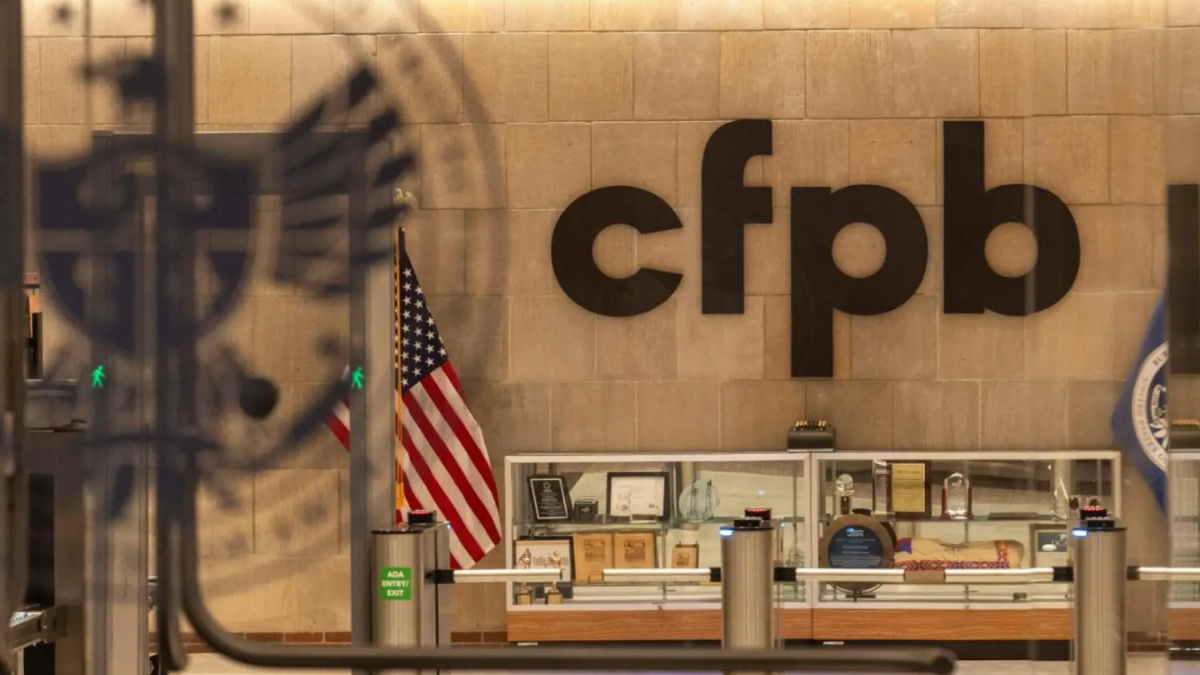In a move that has stirred significant controversy, former President Donald Trump is reportedly planning to eliminate up to 90% of the workforce at the Consumer Financial Protection Bureau (CFPB) should he secure a second term in the White House.
This dramatic proposal, disclosed by insiders within his political circle, marks a bold step in his broader campaign to shrink what he considers bloated federal agencies. Critics, however, warn that the consequences could be dire for consumer rights and financial oversight.
The CFPB was established in 2011 as a response to the 2008 financial crisis, aiming to safeguard consumers against unfair practices in the financial sector.
The agency has since become a cornerstone for consumer advocacy, responsible for returning billions of dollars to Americans and overseeing sectors including credit cards, mortgages, and payday loans.
Trump’s proposed cutback is part of a broader deregulatory agenda. His advisors argue that the CFPB imposes unnecessary burdens on the financial industry, stifling innovation and economic growth. “The CFPB is a prime example of federal overreach that punishes businesses for simply trying to serve customers,” one senior Trump campaign aide stated.
Legal Challenges and Institutional Protections
Despite Trump’s ambitions, legal and procedural roadblocks could hinder any swift dismantling of the CFPB. The agency was specifically structured to operate independently, with protections against political interference.
While the 2020 Supreme Court decision in Seila Law LLC v. CFPB allowed the President to remove its director, it didn’t offer carte blanche authority to overhaul the agency’s entire structure.
Legal experts suggest that firing such a large percentage of its staff would face court challenges and resistance from public employee unions.
Melissa Murray, a constitutional law scholar at NYU, explained, “The President may have influence, but eliminating a majority of the staff would require extensive justification and likely provoke immediate legal opposition.”
Additionally, mass layoffs in a government agency must adhere to civil service protections and administrative procedures. Without congressional approval or an act of Congress to restructure the agency, efforts to carry out such cuts could face gridlock.
Consumer Impact Could Be Devastating
The CFPB has proven itself effective in policing financial abuses. Since its inception, it has returned over $16 billion to wronged consumers and responded to millions of complaints. Its actions have targeted deceptive practices by banks, credit card companies, and debt collectors.
Critics of Trump’s plan warn that gutting the agency would leave American consumers vulnerable. CFPB Director Rohit Chopra, appointed by President Biden, emphasized the importance of the bureau’s mission: “We exist to ensure that Americans are treated fairly by the financial institutions they trust. Cutting back our workforce by 90% would devastate our ability to protect the public.”
Democrats in Congress echoed these concerns. Senator Elizabeth Warren (D-MA), who spearheaded the agency’s creation, called the proposal “an outrageous attack on working families.”
Rep. Maxine Waters (D-CA), ranking member of the House Financial Services Committee, warned that such cuts would disproportionately harm minorities and low-income Americans, who often fall victim to predatory lending.

Political Strategy and Election-Year Calculations
The proposed CFPB layoffs are part of Trump’s broader plan to remake federal institutions he believes are politicized or overreaching. Alongside the CFPB, he’s reportedly considering significant changes to the Environmental Protection Agency (EPA) and the Department of Justice.
As Trump gears up for a potential rematch with President Joe Biden in 2024, the move may energize his base of deregulation advocates and fiscal conservatives. However, it also risks alienating moderate voters who value consumer protections and regulatory oversight.
Biden, in contrast, has strengthened the CFPB’s role during his term, directing it to focus on eliminating hidden fees, enhancing protections for renters and borrowers, and ensuring accountability from major financial institutions.
His administration is likely to campaign on preserving and expanding these protections, drawing a sharp contrast with Trump’s vision.
A senior analyst at the Brookings Institution noted, “This plan is a litmus test for voters: do they want less government oversight in the name of efficiency, or strong institutions to guard against corporate abuse?”
The Future of Consumer Protection Hangs in the Balance
Trump’s sweeping plan to fire 90% of the CFPB’s staff could reshape America’s financial landscape if implemented. For now, the proposal remains theoretical, hinging on the outcome of the 2024 election and the legal feasibility of such massive reductions.
Whether voters embrace this vision or reject it may hinge on their personal experiences with the financial system—and whether they believe the CFPB serves as a bureaucratic nuisance or a necessary shield against exploitation.
For a detailed look at the CFPB’s mission, recent cases, and ongoing initiatives, visit the official site at ConsumerFinance.gov.
Disclaimer – Our team has carefully fact-checked this article to make sure it’s accurate and free from any misinformation. We’re dedicated to keeping our content honest and reliable for our readers.
